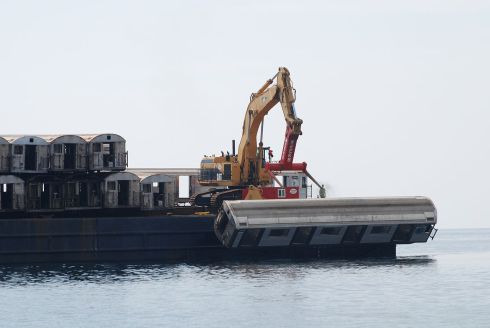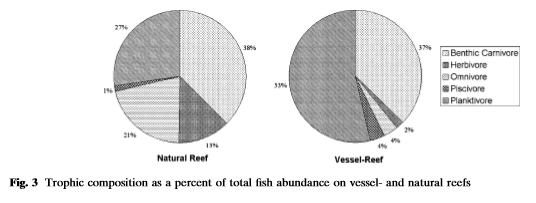Uniqueness of Coral Reefs and their Structure
Coral reefs are home to an abundant number of organisms and many different highly specialized species. Many of these species are endemic to these reefs, meaning they are only found here. Coral reefs also act as a nursery to some species that may not spend their whole life there. Reefs provide structure that promote safety and initiate the settlement of larvae of some species. Not only do they provide valuable services to the marine world, but also act as protection against storm swells and beach erosion for the terrestrial world (to learn more about corals visit here). However, they are in rapid decline as they face many challenges including climate change, ocean acidification and coral bleaching. So, what can be done about this decline? One possible solution is to construct artificial reefs.
What are Artificial Reefs?
Artificial reefs are man-made structures that are designed to imitate natural reefs. They imitate the physical structure that these reefs provide. They can be made from pretty much anything. Some are unintentional, such as oil rigs or boats that have sank, while others are constructed exactly for this purpose. Some are made from concrete or rock, others are made of metal or tires, but the most common object used to make artificial reefs are old ships. One example includes artificial reefs made from sunken New York city subway cars.

Subway cars being pushed into the water by unknown source under [SC DNR, CC 3.0]
Structures are usually placed in open, featureless areas of ocean. These new structures act as a place for new coral polyps to settle, as well as larvae of many species. They can also act as a connection between different reef communities. Many marine organisms, including corals, have a planktonic larval stage. These larva have a set time and distance they can travel. If they don’t settle before then, they will die. Artificial reefs can help connect different populations by serving as points for dispersing organisms to settle. These connections would be multigenerational in most cases as settlement means that individuals don’t move from one reef to another, or in extreme cases, not at all. However, the offspring from one population could move to the next reef, and so on. Eventually, corals and sponges that are found in natural reefs take over and cover the man-made structures, and fish and invertebrates will be attracted to them like they are to natural reefs.

Biscayne National Park by US National Park Services under [CC open access].
Research on Artificial Reefs
A study done by Arena, et al. (2007) that took place off the coast of Florida looked at the differences between natural and artificial (vessel) reefs. They found greater fish abundance and biomass on the vessel reefs, as well as greater species richness. There were also many economically important fish species found on artificial reefs. However, different assemblages of fish were associated with the different reef types. The vessel reefs housed a much greater proportion of planktivores compared to the natural reef. Planktivores on the younger vessel reefs are lower in the food chain, they represent resources yet to be unlocked and transferred to higher trophic levels. Over time, artificial reefs are expected to transition to be more similar to natural reefs as they age.

Artificial reefs can provide a valuable solution to help with the threats that natural coral reefs face, but if things don’t change and stressors continue to increase, then artificial reefs won’t be sufficient.
There are many well known artificial reefs around the world primarily created from old machinery but there are also some that have been placed there initially for this purpose. “The Silent Evolution” by artist Jason de Caires Taylor, is a beautiful project where art sculptures were placed underwater to serve as artificial reefs. Visitors can enjoy the diverse underwater creatures but also take in the mystifying and magical art that is helping to protect Mexico’s rich beauty and important ecology.
Below is a video tour of “The Silent Evolution”
Below is a video about Artificial reefs by Texas Parks and Wildlife:
It is worth mentioning that there are other types of reefs in the world besides coral reefs. Some, such as oyster reefs, can also be artificially made using simple materials such as oyster shells for spat (oyster larvae) to grow on and cement the loose materials into a solid reef structure. Many organizations such as The Elizabeth River Project and Chesapeake Bay Foundation work to restore oysters and reefs in the Chesapeake Bay and waterways of the US.
The information in this chapter is thanks to content contributions from William Trautman.
